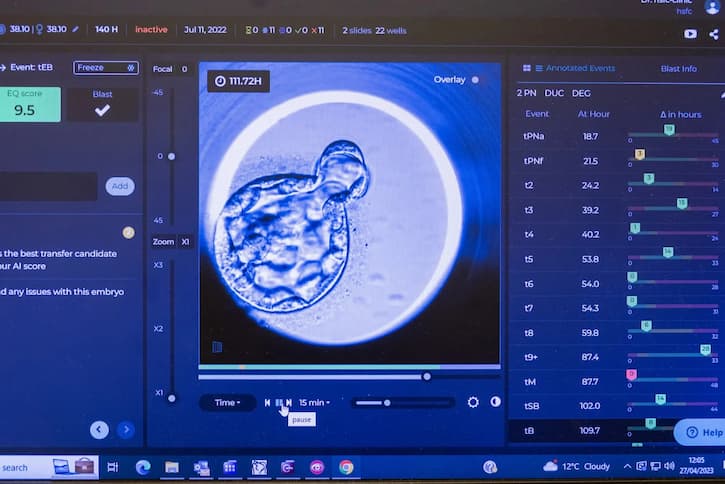
Creating life with Blastocyst Culture
A combination of state of the art laboratory, AI and an experienced embryology team.
Historically....
..embryo transfer following IVF or ICSI took place two or three days after egg collection when the embryo contains around 6-8 cells
Blastocyst advancement today
Laboratory advancements have delivered knowledge and improved success rates for pregnancy.
We now culture embryo's for five to 6 days to develop a blastocysts containing 80-100 cells, allowing the opportunity to prove their development potential, free of damage.
Some fertilised eggs will arrest ( stop developing) prior to day 5. This natural selection enables the embryologist to more accurately choose the best embryo for transfer and the most likely chance of pregnancy.
Grading the embryos
1. Blastocyst grading
Blastocyst grading or quality is determined by evaluating the outer ring of cells, known as the trophectoderm or trophoblastic cells, that will eventually form the placenta; the inner cell mass or ICM, which is made up of the stem cells that the baby will develop from.
Scoring of blastocysts is an imperfect science, and some very nice-looking blastocysts do not necessarily produce a pregnancy. However, the basic rule of thumb is that the best embryos make it to the blastocyst stage, and therefore has a greater chance statistically of producing an ongoing pregnancy than a lesser quality one.
Scoring of blastocysts is an imperfect science, and some very nice-looking blastocysts do not necessarily produce a pregnancy. However, the basic rule of thumb is that the best embryos make it to the blastocyst stage, and therefore has a greater chance statistically of producing an ongoing pregnancy than a lesser quality one.
2. transfer and implantation
During natural conception, eggs and sperm fertilise in the fallopian tube, in which they continue to divide and only reach the uterus on Day 5 post fertilization at this blastocyst stage. Therefore a Day 5 transfer mirrors this physiological timing. Scientific evidence shows that blastocyst transfer success rates are higher than the transfer of day three embryos.
Freezing (vitrification)
Harley Street Fertility Clinic promotes eSET (Elective Single Embryo Transfer) as recommended by the Human Fertilisation and Embryo Authority (HFEA). This means that there are often additional blastocysts remaining after embryo transfer. If the blastocysts are of good quality, they can be stored for use in a frozen embryo replacement cycle (FET) at a later date. The freezing process is known as vitrification. Currently, scientific reports indicate that the chances of pregnancy using blastocysts that have been vitrified is almost equal to those used in a fresh embryo transfer cycle


Artificial Inteligence
Technology advancements like Chloe apply decades of data and algorithms to support Embryologists in selecting and grading blastocysts suitable for implantation. We have invested in this technology in our pursuit for success for our patients.
